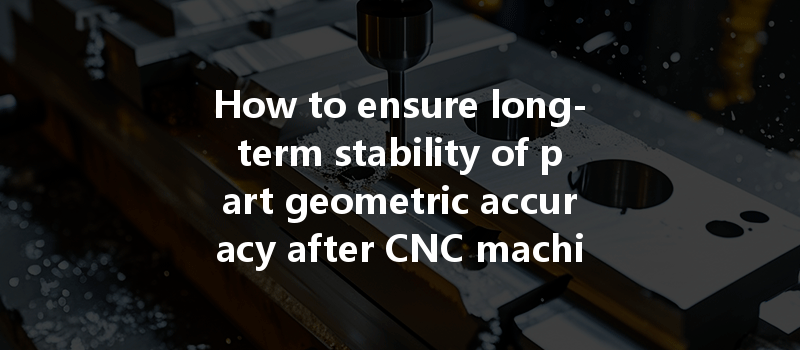*
In the realm of precision manufacturing, the stability of part geometric accuracy post-CNC machining is paramount. A slight deviation in dimensions can lead to significant implications, particularly in industries that rely on high-tolerance components such as aerospace, automotive, and medical devices. At YL Machining, our commitment to delivering high-quality parts is coupled with a rigorous approach to maintaining geometric accuracy throughout the product lifecycle. This blog delves into essential strategies and best practices for ensuring the long-term stability of part geometric accuracy after CNC machining, offering insights backed by industry data and expert recommendations.
Understanding Geometric Accuracy
What is Geometric Accuracy?
Geometric accuracy refers to how closely a manufactured part adheres to its intended design specifications, particularly in terms of shape, dimensions, and alignment. In CNC machining, this is critical as the precision of the final part affects not only its functionality but also its compatibility with other components. Geometric accuracy can encompass various aspects, including:
Importance of Geometric Accuracy
The implications of geometric inaccuracies can range from poor fit and function to complete operational failures. Such issues can lead to assembly delays, increased costs, warranty claims, and, in extreme cases, safety incidents. Data from the National Institute of Standards and Technology (NIST) indicates that manufacturing errors can increase operational costs by 15% to 30%.
Factors Influencing Geometric Accuracy
Materials
The choice of material plays a critical role in the long-term stability of geometric accuracy. Different materials respond uniquely to machining processes and environmental conditions, leading to potential distortions after machining. For instance, metals like aluminum and steel have varying thermal expansion coefficients, which can lead to dimensional changes under temperature fluctuations.
Process Parameters
Key CNC machining parameters—such as cutting speed, feed rate, and tooling—impact the end quality of machined parts. Incorrect settings may lead to excessive wear on tools or thermal distortion of the workpiece. Ensuring optimal process parameters is essential to mitigate these risks.
Environmental Factors
Environmental elements such as humidity, temperature, and vibrational interference can significantly influence geometric stability. For example, aluminum alloys may expand and contract more than steel when subjected to the same temperature changes, necessitating careful environmental control.
Strategies for Ensuring Long-Term Geometric Accuracy
To achieve long-lasting geometric stability, selecting the appropriate material that aligns with the application requirements is fundamental.
Recommendation: Always request material certifications that report the material’s mechanical properties and include heat treatment history when selecting metals.
Implementing advanced CNC machining techniques can improve geometric accuracy significantly.

Integrating quality control practices throughout the machining process is vital for ensuring long-term accuracy.
Data Analysis: A recent study conducted by the American Society of Mechanical Engineers (ASME) indicates that companies that implemented stringent quality inspections reported a 40% reduction in post-production errors.
Like any manufacturing process, environmental factors should not be underestimated in maintaining part geometric stability.
Recommendation: Utilize climate control systems that allow easy monitoring and regulation of the machining environment.
Post-machining processes can significantly influence geometric stability.
Best Practices for Long-Term Maintenance of Geometric Accuracy
Regular Maintenance of CNC Machinery
CNC machines themselves require regular maintenance to function effectively and consistently produce high-quality parts.
Continuous Training of Operators
Operators’ skills and knowledge play a pivotal role in achieving and maintaining accuracy.
Utilizing Advanced Technologies
Adopting advanced technologies and tools can offer significant benefits in maintaining geometric accuracy.
In conclusion, ensuring the long-term stability of geometric accuracy in CNC machined components requires a multifaceted approach encompassing material selection, advanced machining techniques, rigorous quality control, environmental considerations, and continuous operator education. At YL Machining, our dedication to excellence drives us to adopt methods and technologies that not only meet but exceed industry standards. By integrating these strategies, manufacturers can ensure that their components maintain their precision and functionality well beyond the initial machining process, safeguarding quality and performance for the long term.
For more information about how YL Machining can support your CNC machining needs and uphold the integrity of your projects, please reach out to us directly.






